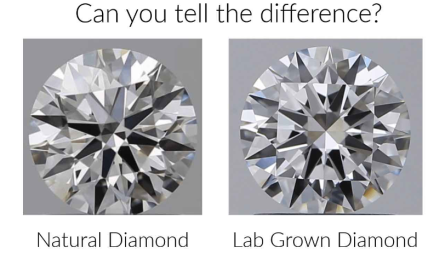Are you seeking to make your engagement ring setting full of glitter and brilliance? If yes, consider pairing it with a pave diamond setting. Its name is derived from the French word “pave’ ” which means paved surface since its design mimics that of the cobblestone road.
Choosing a pave setting for an engagement ring will see you highlight an impressive center stone. No matter what you are planning for be a traditional engagement ring featuring a diamond center stone or if you intend to complement your style with a striking gemstone, pave engagement rings offer the appropriate amount of glow to your ring finger. You will get to learn more about this in our ultimate diamonds buying guide.
This ultimate diamonds buying guide will explore what is meant by pave settings, the various types of pave settings, and their pros and cons.
What is a Pave Setting
A pave setting ring usually contains diamonds or gemstones that enclose the band. This offers your ring a layout of diamonds that wrap around the whole band, giving rise to a new level of glistering and brilliance to your hand. The pave diamond setting is an outstandingly flexible setting for engagement rings as it can be used in a variety of diamond shapes and design styles as it will be shown in our ultimate diamonds buying guide.
Pave engagement rings are an ideal option for those on the hunt for a sparkling and minimally visible metal. In this setting, the center stone will illuminate brightly as the central point while the pave diamond will create an extra sense of shine and elegance. A thin band will provide optimal attention aimed at your center stone, whereas the small implanted diamonds will offer an outline of valuable gems.
Types of Pave Settings
There are numerous types of pave settings that will blend with your engagement ring. Regardless of what you have chosen, be it a classic round cut center stone, cushion cut, oval cut, or an emerald, a pave setting can greatly improve the design. In these ultimate diamonds buying guide, we will look at each of these types in detail alongside their pros and cons.
Micro Pave
The micro paves setting style mainly involves the use of small diamonds across the band. These diamonds generally average slightly below 0.1 carats for every stone. A micro pave setting comprises about one hundred small diamonds that surround your engagement ring.
French Pave
This setting contains diamonds on the band in V-shaped settings. The French pave setting makes the larger part of the pave diamond noticeable from both the top and sides of the band. Our gemologists in these ultimate diamonds buying guide have revealed that the diamonds and gemstones contained in French pave settings are often larger in size compared to micro pave.
Petite Pave
The petite pave closely resembles the micro pave setting with conventional small diamonds inserted across the band. Nonetheless, a petite pave uses tiny prongs to make diamonds and other gemstones more noticeable.
Caring for a Pave Setting
As per our Rare Carat diamonds buying guide, pave settings are usually more delicate compared to other engagement ring settings. Because of their fragile nature, pave engagement rings need to be steam cleaned with moderate, minimal use of polishing cloth. Our experts at Rare Carat recommend taking off the ring before engaging in intense activities that may quickly damage the ring. This is because they tend to have very small prongs and diamonds that are susceptible to damage, especially when you make contact with rough surfaces. This ultimate diamonds buying guide recommends removing the ring when handling rough surfaces to avoid damage.
Pros and Cons of a Pave Setting
When choosing a pave setting engagement ring, there are several factors you need to consider, particularly the set design, the style of the wearer, and the level of maintenance needed. To help you make an informed decision, our team of experts at Rare Carat have compiled the pros and cons of pave-setting engagement rings in the ultimate diamonds buying guide.
Pros
•Available in various designs including modern and vintage style
•Complements the overall elegance and brilliance of the ring
•Adds more sparkle to a lower set or minimally glittery center stone
•Makes the center stone more striking
Cons
•While not more common, there is a minimal prospect of losing side stones.
•Adjusting and readjusting can be a challenge if the ring is pave set within the entire band.
We at Rare Carat recommend ascertaining the size of your partner’s ring in the early stages of the design process to avoid readjusting troubles.
Wrapping Up
As you can see, pave settings engagement ring is all that you need to sparkle your center stone diamond and add an extra bit of brilliance. As per our ultimate diamonds buying guide, you have learned of the various types of pave settings that will help you make an informed decision regarding the type of setting that is best suited for your case. We at Rare Carat can help you find a suitable pave-setting engagement ring by modifying the existing rings to suit your tastes and preferences.


